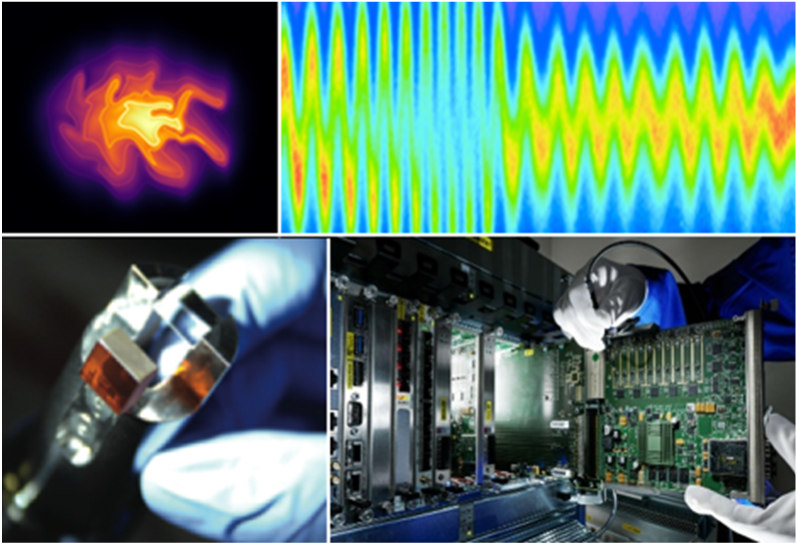ST3 - Advanced Beam Control, Diagnostics and Dynamics
The strategy for ST3 focuses on developments of instruments and methods, both experimental and theoretical, to tackle a large dynamical range in all relevant criteria. Key ingredients to ensure the feasibility of next-generation accelerators are accelerator stability, control, and synchronization using state-of-the-art technologies, such as high-speed digital electronics, low-noise detector systems, and novel feedback algorithms implemented in powerful field programmable gate arrays (FPGAs) acting on multiple manipulators simultaneously. For advanced feedback control, it is planned to use real-time beam dynamics simulation, which enables improved control over the accelerator. Beyond femtosecond-stable reference systems, developed during the third program-oriented funding period of the Helmholtz Association, synchronization control also requires the preservation of the synchronization stability in the downstream subsystems, such as high-power lasers or radio frequency (RF) power sources. RF control requires new RF phase detectors with attosecond field resolution to meet future goals. Of increased importance is laser control of particle beams, e.g. using advanced laser pulse shaping techniques adapted via precision online diagnostics as well as techniques to minimize the beam emittance, tailor electron beams for THz emission, or synthesize extreme ultraviolet (XUV) photon pulses through external seeding.
Extreme-range beam diagnostics for exploring all relevant parameters for tomorrow’s beams in the time and frequency domain and for application to particle (electrons, protons, ions) and photon beams need to be studied in ST3. For example, with the PolariX transverse deflector femtosecond beams can now be resolved in all dimensions. New techniques such as laser-driven THz pulse streaking and spectrometers resolving coherent radiation will allow for unprecedented, in-depth longitudinal phase space analysis. For non-destructive measurements of high-repetition-rate beams, fast 1D (e.g. KALYPSO) and 2D detectors are increasingly relevant to determine intra-bunch parameters in a single shot, and by providing low-latency outputs. These detectors will be of great importance in advanced feedbacks loops for stabilization.
Attosecond metrology is crucial to achieve the next level of time resolution in accelerator-based experiments. While the scope of the research program aims at the synergetic use of technologies and methods for all types of next-generation beams, the generation, detection, and control of ultrashort electron bunches remains at the core of our activities. Exploring the dynamics of custom beams at the forefront of today’s technology is a prerequisite for the design of future high performance or compact accelerators. To achieve a reliable generation of attosecond to femtosecond electron pulses in free electron lasers, it is planned to establish improved start-to-end modeling considering all relevant aspects from the electron source dynamics to the mitigation of harmful collective effects. Generating high-repetition-rate coherent radiation from exploratory operation modes (e.g. multiple-orbit schemes, modulated phase space) with picosecond bunches in storage ring light sources and reaching the highest electromagnetic fields are further topics addressed in our work program.

Point of contact
Holger Schlarb (DESY) und Erik Bründermann (KIT)